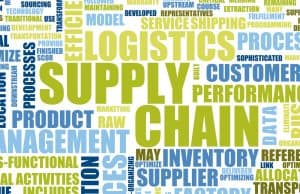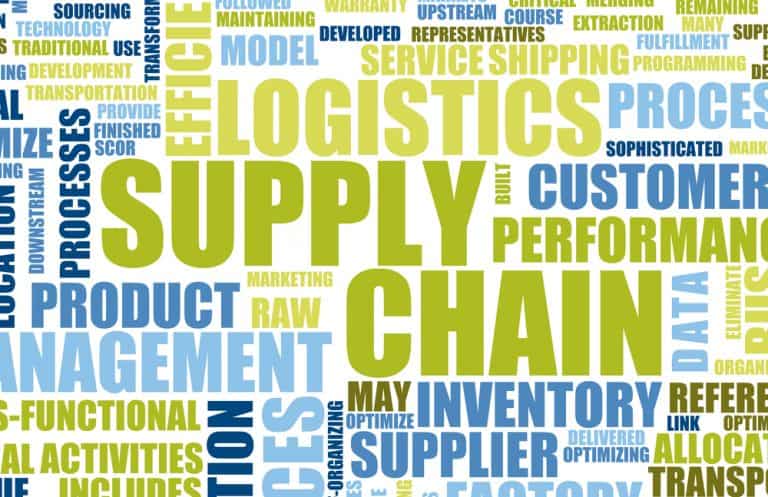
As the world of commerce gets smarter, the logistics industry will increasingly rely on IoT devices to maintain the agile and data-driven approach that today’s businesses require.
The Internet of Things (IoT) has the power to create a smarter and more connected world of commerce. With the increased importance of supply chains and warehousing to eCommerce and global trade, there’s never been a better time to consider adding IoT capabilities to your logistics facilities.
Here
are five benefits that your supply chain can capture by implementing targeted
IoT solutions. From real-time inventory tracking to the management of surety bonds and other paperwork, an
IoT-enhanced supply chain can take your logistics operational capacities to the
next level.
See also: The Strain on Data Supply Chains: Why Data Democratization is a Priority
1) Real-Time Tracking: Transparency and accountability are
the foundations of a functional supply chain, and real-time tracking provides
both. IoT devices such as GPS monitors can now track everything from a
shipment’s location to its current temperature, providing up-to-the-minute facts
that help logistics professionals truly understand how their supply chains
operate.
Real-time
tracking is particularly useful for high-value items and temperature-sensitive
goods. Every stage of a shipment’s chain of custody can be mapped and verified through
the use of IoT data and device check-ins. As just one example, IoT devices can
automatically flag shipments that have left a safe temperature zone, helping to
protect consumers from spoiled goods.
This
allows accountability to be assigned in the right places and for targeted
improvements to be made in the supply chain elements where they’re needed most.
Increased transparency creates a virtuous cycle in which all stakeholders are
both more cognizant of and more accountable for their responsibilities.
2) Forecasting Accuracy: A properly implemented IoT system
can help improve a business’s
demand forecasting. By automatically collecting data, IoT systems improve data
accuracy and give supply chain managers better materials with which to work in
creating demand forecasts.
IoT
improves data collection practices in a variety of ways. First, it
substantially reduces the influence of human error in data collection. It
allows data to be collected at all times or at specified intervals and saves
labor hours spent manually collecting data. Finally, it can allow businesses to
collect data that would be difficult or impossible to collect manually.
However,
it’s important to remember that IoT solutions need to be accompanied by
compatible backend and software solutions. Logistics professionals should
design their IoT systems in tandem with their logistics and demand forecasting
software to ensure that their IoT data is usable and that their analysis is
focused on the right factors.
3) Inventory Control: Inventory control is a critical part
of warehouse and supply chain management, and IoT can provide
benefits in this area as well. By using advanced IoT sensors that automatically track and
analyze inventory positions and stock levels, supply chain professionals can
create an accurate and up-to-the-minute inventory tracking system.
Most
IoT inventory control systems automatically reconcile their inventory counts
with records, making laborious hand counts unnecessary and improving
consistency and reliability. The systems’ sensors also gather data that can be
analyzed through IoT-enabled warehouse management software to identify bottleneck
points and monitor the minute-by-minute movements of inventory that determine a
warehouse’s operational efficiency.
IoT
inventory control technologies such as smart shelves and RFID scanners are
already in widespread use. RFID has become particularly popular as a method for
tracking high-value inventory, and it can also provide increased efficiency
over traditional barcodes. Perhaps most exciting of all, even more advanced
technologies such as inventory scanning
drones
are on the horizon.
4) Automation: Supply chain automation will continue to grow
in importance throughout the 2020s, particularly in the warehouse. As
businesses automate increasing amounts of warehouse tasks, they’ll need
accurate and immediately available data to power their automated systems.
Consider
this example: A customer places an online order with a business that has
automated its warehouse operations. Before the customer ordered, the
warehouse’s smart shelving system had detected the product’s stock status via a
weight plate, so there’s no danger of a backorder. An automated picking system
receives the pick order from the computer, and a mechanical system moves the
item onto a conveyor belt to a packaging station. While the package is in
transit to the customer, an IoT sensor tracks it and ensures that it’s handled
with appropriate care.
While
most supply chains won’t go straight to such an advanced level of automation,
almost every system can benefit from at least one of the many innovations of
the IoT enhanced supply chain. The key is to find an automation system that
works for your logistics applications and implement it in a way that achieves
your business goals.
5) Paperwork Management: Paperwork management is key for
smooth supply chain operation, but it’s also a common employee pain point, particularly
when the responsibility falls on workers such as truckers. By using smart
logistics solutions, businesses can automate their most cumbersome paperwork
tasks, such as verifying a trucker’s freight broker bond or processing a bill of lading.
It’s
all made possible through the tools of electronic data interchange (EDI). EDI
systems use standardized data formats to automatically exchange data with
trading partners. When paired with properly implemented IoT, EDI systems can be
an extremely effective tool for streamlining the data exchanges that keep
commerce moving.
Final Thoughts
Of
course, capturing these benefits depends on a thorough and well-considered
implementation of IoT best practices. Adding IoT devices to your networks
without properly securing and integrating them invites dysfunction at best and
disaster at worst. Always follow the key security practices
recommended by IoT professionals, such as regularly checking for IoT
software updates and changing passwords.
However,
when implemented correctly, IoT enhancements can be transformative factors for
a supply chain. As the world of commerce gets smarter, the logistics industry
will increasingly rely on these devices to maintain the agile and data-driven
approach that today’s businesses require.


